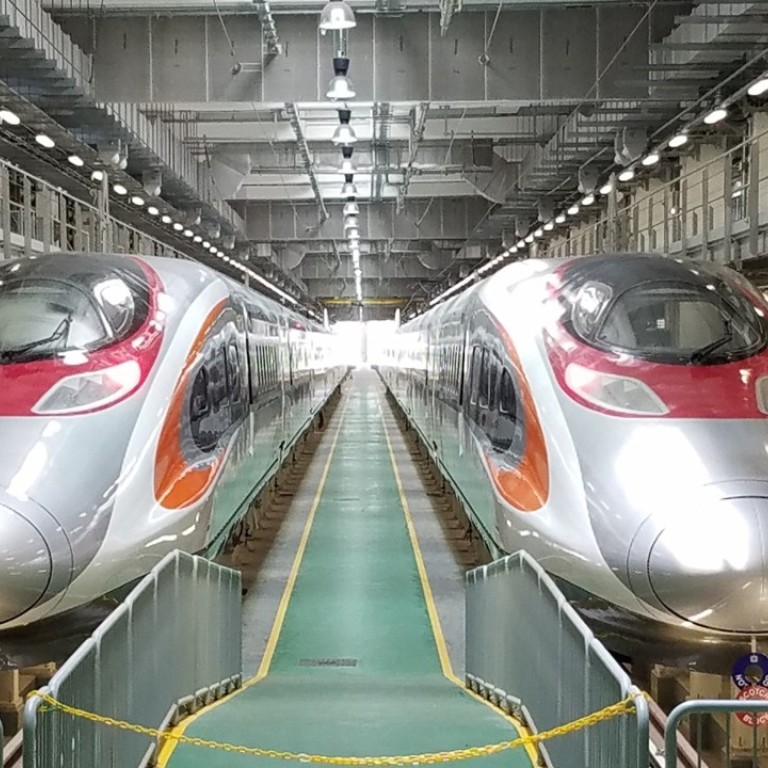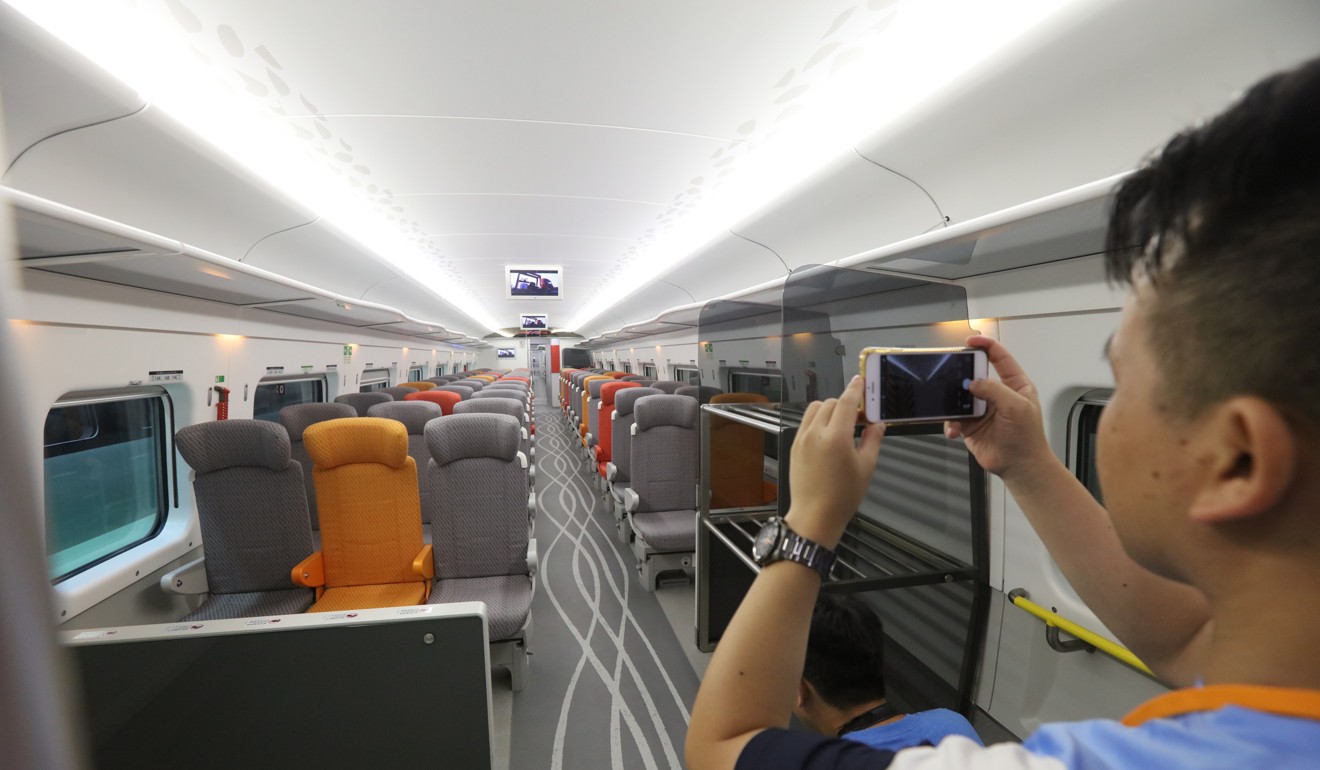
Hong Kong leader inspects high-speed train and stresses need for mainland Chinese officials at city terminus
Service will be ‘hugely undermined’ without a joint checkpoint in West Kowloon, chief executive says
The design of Hong Kong’s high-speed train was unveiled on Sunday, as the city’s leader Carrie Lam Cheng Yuet-ngor warned the benefits of an express link to the mainland “will be hugely undermined” without the controversial joint law enforcement at its West Kowloon terminus.
Lam touched on the sensitive topic of the co-location of immigration checkpoints as she pledged that the arrangement, to be rolled out soon, would comply with the “one country, two systems” principle and the Basic Law, the mini-constitution guaranteeing the city’s high degree of autonomy.
Watch: Hong Kong leader inspects new high-speed train at Shek Kong
Secretary for Transport and Housing Frank Chan Fan is due to disclose details of the co-location arrangements on Tuesday. Lam’s administration is also expected to mount a publicity campaign for the cross-border railway this week.
The chief executive issued the warning after inspecting an express train at Shek Kong, the first one delivered to Hong Kong by land on Thursday. Two trains were previously shipped to Hong Kong from Qingdao,in Shandong province, where they were manufactured, as the railway tracks were not ready at that time.

The Guangzhou-Shenzhen-Hong Kong Express Rail Link, due to open in the third quarter of 2018, is a political hot potato as it will require mainland Chinese officers to be stationed in Hong Kong to enforce mainland laws.
It will be the first major challenge for Lam’s administration, which plans to table a bill for the law enforcement model to the Legislative Council after the summer break.
Watch: all you need to know about the high-speed rail link
Concluding the one-hour visit, Lam said: “There will be lots of trains departing from West Kowloon to Beijing, Shanghai and various stations along the way, and it will bring about huge convenience.
“The railway’s effectiveness will be significantly undermined if passengers need to go through immigration, customs and quarantine procedures after crossing the city’s border,” she continued, adding it was “impossible” to post immigration officers in every station around the country to handle outward travellers from Hong Kong.
After Lam and Chan arrived at the rail facility in Shek Kong at 11am on Sunday, they first listened to a presentation by Wong and MTR chief executive Lincoln Leong Kwok-kuen, who told the chief executive that by last month the Hong Kong section of the rail link project was 94.3 per cent completed.
After she concluded her visit, journalists were allowed to step into the train for the first time. It is 203 metres long with eight cars. There are 579 seats in total, including 68 first-class seats in the first and eighth carriages, but only two wheelchair spaces, in the seventh compartment.
The train is equipped with power sockets, built-in Wifi routers, and rows of rotatable chairs.
Currently, a train journey from Kowloon to Guangzhou takes around two hours, but the high-speed model will whisk passengers from West Kowloon to Guangzhou South in 48 minutes, even though it was unlikely to be travelling at its maximum speed of 350km/h.

